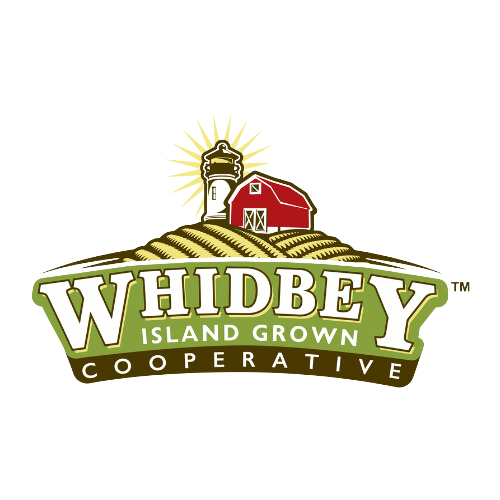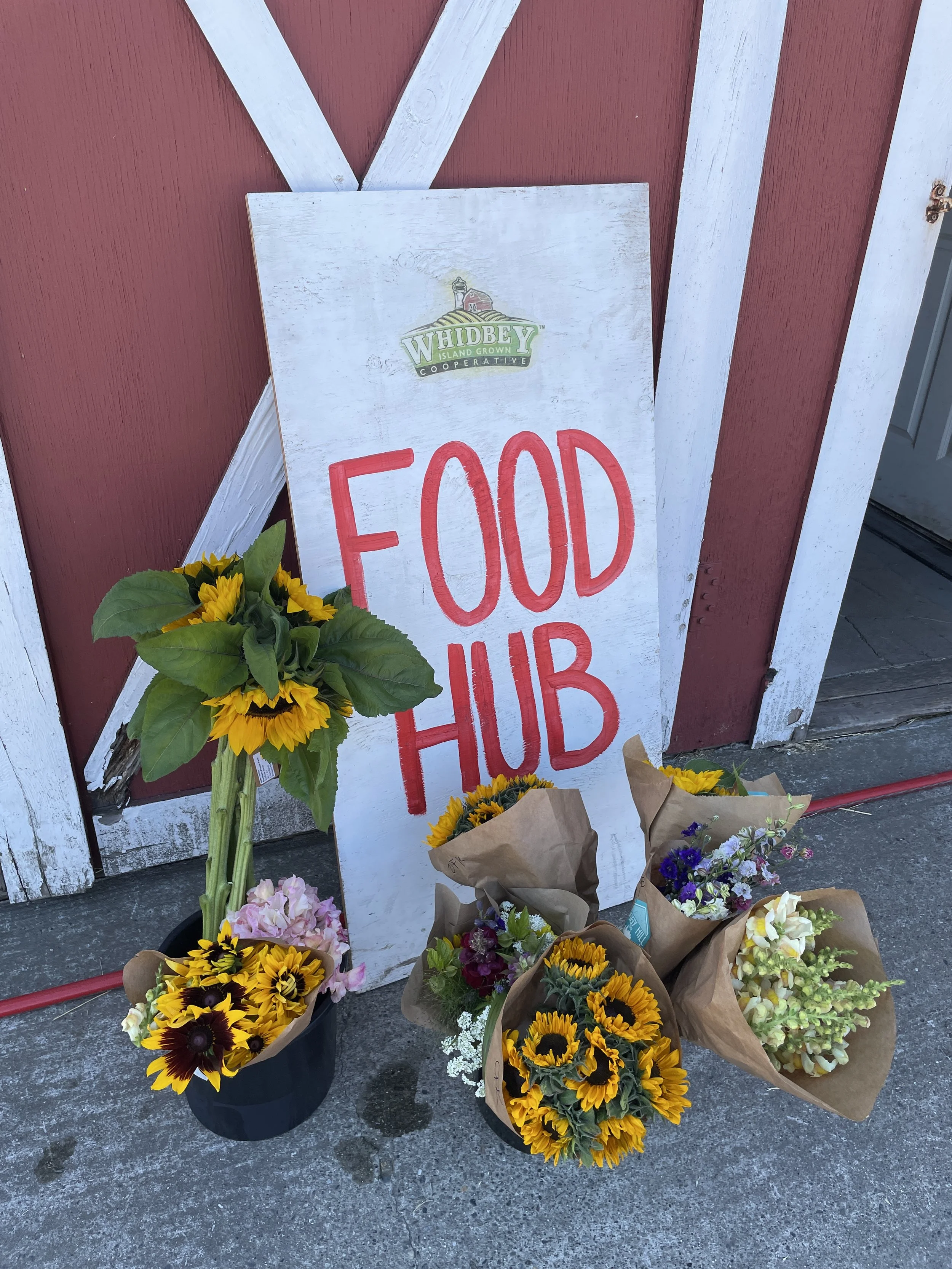
Sell Your Locally Grown and Produced Products on the Food Hub
Benefits to selling on Food Hub
Reach: Expand your customer base across Whidbey Island effortlessly.
Convenience: Enjoy a single weekly pick sheet and drop-off point, where Food Hub employees aggregate, pack, and distribute orders for you.
User-friendly: Easily manage your products and inventory, set your prices, and showcase your business information to customers through an intuitive online interface.
Flexibility: Take advantage of built-in market access; sell your products on the online marketplace whenever you're ready. If you need a break, simply skip a week and return to the same customer base the following week.
Support: Join us in efforts to expand local agriculture markets, boost demand for local food, and contribute to a healthier, more resilient community.
Ownership: As a cooperative member, be an owner-investor in a local distribution network.
How it works:
Each week producers post available products and specify the dollar amount they want to receive for each item.
Consumers will see a price that includes an 18-25% mark-up applied to the amount the producer chooses. The producer receives the price they list, and the mark-up will cover the bare bones of software costs, credit card processing fees, staff, and gas.
We currently offer two order periods - one for Retail/Direct to Consumer customers and one to wholesale buyers like markets and restaurants.
The RETAIL FRIDAY order period is open for customers Friday at noon - Tuesday at 9pm. Producer orders are dropped off on Thursday or Friday morning.
The WHOLESALE WEDNESDAY order period is open for customers Thursday at noon - Sunday at 10am. Producer orders are dropped off on Tuesday afternoon or Wednesday morning. READ OUR WHOLESALE WEDNESDAY PRODUCER GUIDE HERE.
A pick list is generated for each respective order period for producers to fulfill orders. Your products should be packaged, labeled, and ready for the customer as coordinated with the Market Manager.
Aggregation sites for order drop off include: Oak Harbor, Ebey Road Farm, Mutiny Bay Blues Farmstand, and the WIGC Warehouse in Langley.
After all products are aggregated at the WIGC Warehouse, each order is hand packed and then distributed to customers. WIGC handles billing and provides weekly payments to producers.
Ready to join? Follow the steps below to get started.
Steps to Sell on the WIGC Food Hub
STEP 1 Read the The WIGC Food Hub Manual and the WIGC Membership Guide to learn about our mission, goals, and program rules.
STEP 2 See our Local Food Marketplace website to get an idea of what customers read and how they shop: https://whidbeyislandgrown.localfoodmarketplace.com/
STEP 3 Click APPLICATION and provide basic background information, or contact Shannon at foodhub@whidbeyislandgrown.com.
STEP 4 The Market Manager will reach out to you with any further questions before presenting your application to the board for review and approval.
STEP 5 Once approved, You will receive an email from the Market Manager to set up a time to get trained in using the LFM marketplace. Training over Zoom takes approximately 45 minutes.
STEP 6 Provide the documents listed below to the Market Manager.
STEP 7 Start Selling!
Required documents for producers:
Copy of your Business License
Liability Insurance ($1,000,000/$2,000,000) with Whidbey Island Grown Cooperative named as Certificate Holder
Any other relevant permits and/or licenses such as egg license, organic certification, etc.
Print, sign, and return a W-9 form for the current year
Provide a Direct Deposit Form
Signed Sellers Commitment Form
Logo and two farm pictures emailed to Food Hub Manager at: foodhub@whidbeyislandgrown.com
FAQ for Food Hub Vendors
-
The Food Hub is considered a third party distributor. Producers can sell on the Hub if they have permits/licenses to sell through third parties. Examples of licenses include WSDA Processors License, WSDA Commercial Kitchen/Commissary License, Egg License.
Producers are not eligible to sell on the Food Hub if they have direct to consumer ONLY licenses/permits, such as a Cottage Kitchen License.
-
WIGC direct deposits producer payments the Friday following distribution.
-
It happens! Because all the Food Hub products are pre-ordered, occasionally the products aren’t available at the time of distribution.
Let the Market Manager know as soon as you are aware of the problem, and we will credit the customer and/or find substitute products from other producers if appropriate.
-
Customer complaints are always communicated to the producer, and the producer has the option to decide how they want to handle the complaint, with support from the Market Manager

